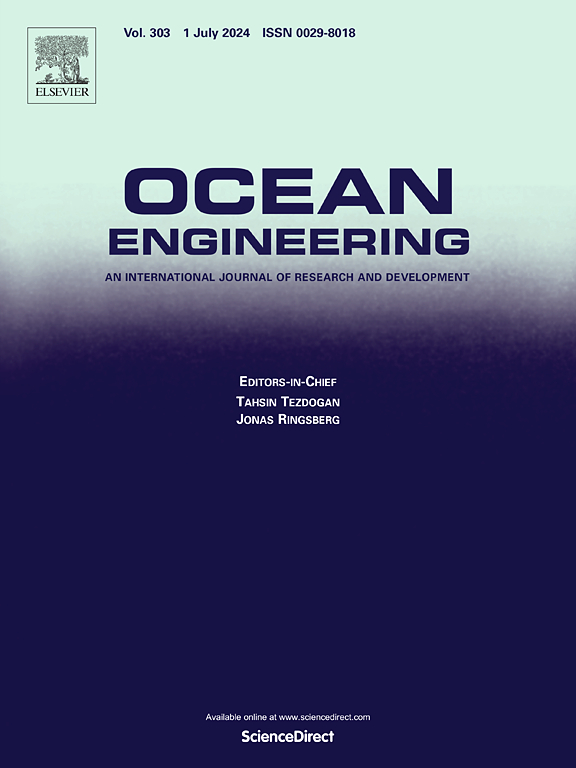Experimental and numerical study on a universal distorted model design strategy for the box girder with the double bottom under the bending moment considering the ultimate strength and buckling collapse modes, Part 1: scaling strategy
IF 5.5
2区 工程技术
Q1 ENGINEERING, CIVIL
引用次数: 0
Abstract
The ultimate bending moment and buckling collapse modes are critical factors influencing the progressive collapse behavior of the hull girder. Combined experimental and numerical analyses have typically provided robust insights into such non-linear mechanical performance. To address challenges in loading, specimen arrangement, data acquisition, and other issues encountered in the full-scale prototype experiments, scaled model experiments are commonly employed. Specifically, distorted models with unequal scale ratios in geometric dimensions and plate thickness are typically used to meet the limitations of loading capacity and the requirements of construction technology. To accurately reveal the ultimate load-carrying capacity and the buckling collapse modes of the prototype, this study proposes a universal scaling design strategy for distorted box girder models used in experiments. The similarity law for achieving the similarity in the ultimate bending moment and collapse modes of the box girder includes the similarity in section properties of the girder and the slenderness of the local stiffened plate. Due to the distortion caused by unequal scaling, the similarity in section properties will be broken. To meet the requirement of the similarity law, this study focuses on the scaling strategy to achieve similarity in the section properties of the deck and bottom simultaneously. A series of comparative scaling strategies were proposed based on the consideration of gradual improvement. Finally, the proposed scaling strategy was verified using numerical results to demonstrate its applicability to any bending case.
考虑极限强度和屈曲破坏模式的双底箱梁弯矩作用下通用变形模型设计策略的试验与数值研究,第一部分:标度策略
极限弯矩和屈曲垮塌模式是影响船体梁连续垮塌行为的关键因素。结合实验和数值分析通常提供了对这种非线性机械性能的强有力的见解。为了解决在全尺寸原型实验中遇到的加载、试样排列、数据采集和其他问题,通常采用比例模型实验。具体而言,为了满足承载能力的限制和施工技术的要求,通常采用几何尺寸和板厚比例比例不等的变形模型。为了准确地揭示原型的极限承载能力和屈曲破坏模式,本研究提出了一种用于实验的变形箱梁模型的通用标度设计策略。实现箱梁极限弯矩和倒塌模式相似的相似规律包括箱梁截面特性和局部加筋板长细度的相似。由于尺度不均匀引起的变形,会破坏截面特性的相似性。为满足相似律的要求,本研究重点研究了同时实现桥面和桥底截面特性相似的标度策略。在考虑逐步改善的基础上,提出了一系列比较规模化策略。最后,用数值结果验证了所提出的缩放策略对任何弯曲情况的适用性。
本文章由计算机程序翻译,如有差异,请以英文原文为准。
求助全文
约1分钟内获得全文
求助全文
来源期刊

Ocean Engineering
工程技术-工程:大洋
CiteScore
7.30
自引率
34.00%
发文量
2379
审稿时长
8.1 months
期刊介绍:
Ocean Engineering provides a medium for the publication of original research and development work in the field of ocean engineering. Ocean Engineering seeks papers in the following topics.
 求助内容:
求助内容: 应助结果提醒方式:
应助结果提醒方式:


